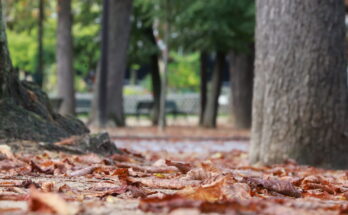May the Spanish Civil War and its aftermath be seen and heard. May the monument that Franco designed to immortalize his victory, that sort of great pyramid which was, until the transfer of his remains in 2019, a monument to a dictator, become a museum of memory giving voice to the political prisoners who participated in its construction. These are some of the milestones raised by the winning project of the international competition of ideas to give a new meaning to the Cuelgamuros Valley, to which this newspaper had access. This is the last phase of a plan initiated in the first socialist government of José Luis Rodríguez Zapatero so that democracy definitively takes away from the dictatorship its last great symbol, the best example of what national-Catholicism meant. The 2007 law on historical memory prohibited acts glorifying Francoism in its surroundings. It was the first step. The last one, with an uncertain trajectory, is entitled The base and the cross and was prepared by Pereda Pérez Arquitectos and Lignum SL, which prevailed over the other 33 proposals presented in a competition to intervene architecturally, artistically and also emotionally in the complex. The uncertainty depends on the calendar: work is expected to start in 2027, the year in which general elections will be held if there is no advance notice. The total budget for the resignation plan amounts to 30.5 million euros.
The museum proposal for the interpretation centre, which would occupy a place on the current access square, includes six thematic blocks: “Spain in front”; “A monument to remember”; “How it was done”; “Art and part”; “Archaeology and life in prisons”; “Historical memory and democratic memory”. The first includes an “immersive” audiovisual display, with curved and vertical screens, on the ceiling and on the floor, to show images of the development of the conflict, the bombings, its political and social context and the connection with the two world wars. The second block is designed to remember with panels and projectors the reasons that pushed Franco to build the monument, while the data on those shot, on mass graves, on exiles, on prisoners and on victims of concentration camps are displayed. The third, through screens, showcases and graphics, explains how the work was financed and the criticism that its high cost has aroused abroad. Here the visitor could listen to the stories of History through the recorded testimonies of workers, prisoners, guards, foremen… who worked in the Valley, and see photographs of those who were recruited to build the monument. The room presents an explanatory journey on the architecture, sculpture and paintings present in the original project. The fifth aims to enhance the knowledge acquired after recent excavations in the barracks and barracks where the inmates who worked in the Valley and their families lived. And in the last block there will be a projection of images of the inauguration in 1959; consulting the press review with the judgment of the victorious powers of the Second World War on Franco’s dictatorship; and information about the transition and final plan to resignify the monument.
The base and the cross highlights the possibility of carrying out a virtual visit with augmented reality applications. The winning project also foresees that the space will host temporary exhibitions on topics related to coexistence, human rights, the Spanish Constitution, the transition towards democracy…
New architectural elements
The project, which seeks a balance between landscape and architecture; the religious and cultural program; history and memory, proposes a minimal intervention inside the monument and focuses, fundamentally, on the external esplanade, where it provides new elements: a platform that occupies the entire west side and a circular patio of 40 meters in diameter which facilitates underground access to the entire Basilica and articulates circulation towards new cultural and pedagogical uses.
Likewise, the project envisages a typology of granite dunes that would be made with the material removed from the complex itself. In the central patio of the Interpretation Center a performance titled Look how it’s raining, invites the visitor to observe the rain, according to the winning project of the competition. The dismantling of the current staircase would also be reused for a type of sculpture that allows the visitor to sit, talk and observe views.
The jury that chose this project, chaired by Iñaqui Carnicero, general secretary of Urban Agenda, Construction and Architecture, included, as an advisor, a representative of the Catholic Church, Daniel Alberto Escobar Portillo, former member of the Escolanía del Valle. Also present were the artist Cristina Iglesias, author, among other works, of the doors of the Prado Museum and the architects David Chipperfield (English, Pritzker Prize 2023); Fuensanta Nieto and María Langarita, among others.
Previous
Delays and controversies dot the history of the monuments of various countries from which the Government was inspired in launching the international competition of ideas to give a new meaning to Franco’s former mausoleum. The Holocaust Monument (Berlin) began to be talked about in 1989 and was inaugurated in 2005. In April 2013, the Memorial to the victims of violence in Chapultepec, Mexico City was inaugurated, amid controversy. President Felipe Calderón had promoted him, but was not present at his inauguration. The works were carried out on land used by the army, which has been reported several times in the country for human rights violations, which displeased some relatives of the murdered people.
Francoist and anti-memorialist groups have already expressed their opposition to the project to redefine the Cuelgamuros Valley, just as they have fought, even in court, to try to prevent the exhumation of the remains of the victims buried in the Valley’s crypts without the consent of their families.


